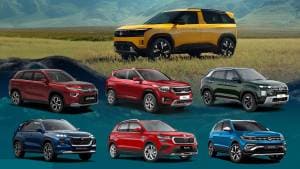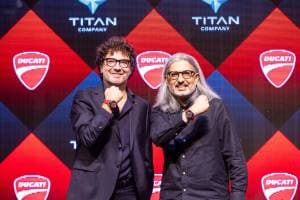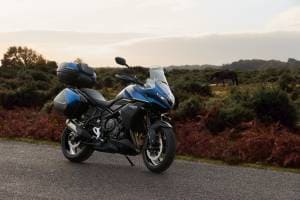Auto siblings: Maruti Suzuki Baleno, New-gen Maruti Suzuki Swift and Maruti Suzuki Ignis
In some ways we Indians are now a truly empowered people, simply because our consumers now have the power to 'pick and choose'. The Collins English Dictionary defines 'pick and choose' as, "When you carefully choose only things that you really want and reject the others". Yes, thanks to the growing economy and rise in disposable incomes, along with the availability of a plethora of products, almost every Indian now only wants to buy what attracts him, and what's latest in the market. The vehicle has to be different and it must offer something out of the ordinary. And of course it must look good, have lots of features, be a good performer, while obviously also providing good value.
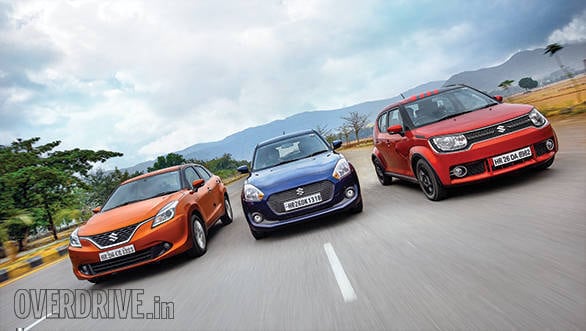
Despite some serious competition, Maruti Suzuki has been able to maintain its stranglehold as market leader, mainly because it's able to deliver all of the above. Maruti have really worked hard and done well to have a large variety of vehicles in their portfolio, almost all of which are most successful in our country. In fact currently, they offer as many as 15 different models, not counting the various variants of these. No other auto manufacturer, apart from the luxury car makers, who import and sell many of their models as CBU's (Completely Built-up Units), offer such a vast and varied choice. Maruti Suzuki is also known for regularly introducing new vehicles and being able to cater to the constantly changing choice of the customer.
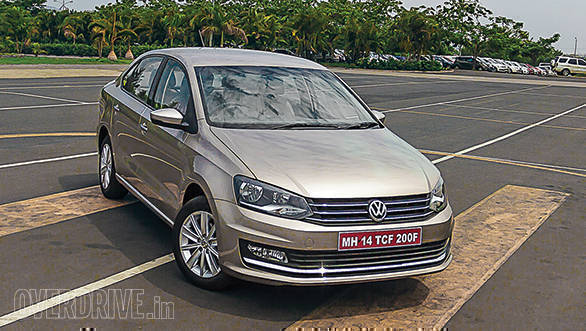 Volkswagen and Skoda are essentially the same vehicles, with few cosmetic changes and somewhat separate interior treatments. Since they carry another brand's badge, the pricing and positioning usually differs
Volkswagen and Skoda are essentially the same vehicles, with few cosmetic changes and somewhat separate interior treatments. Since they carry another brand's badge, the pricing and positioning usually differs
So how does any manufacturer, continue to develop and deliver new vehicles, while remaining profitable? It's not only the cost of developing a new vehicle that is huge, but the time required is also considerable. Having a variety of vehicles is certainly very nice and desirable, but how do you make it all happen and work? In earlier times, things were much simpler. You simply did badge engineering, i.e. you stuck different badges on what was basically the same vehicle. In India, we can see something similiar to this even today, with vehicles like the Renault Duster and Nissan Terrano. Or Volkswagen Vento and Skoda Rapid. These are essentially the same vehicles, with few cosmetic changes and somewhat separate interior treatments. Since they carry another brand's badge, the pricing and positioning usually differs.
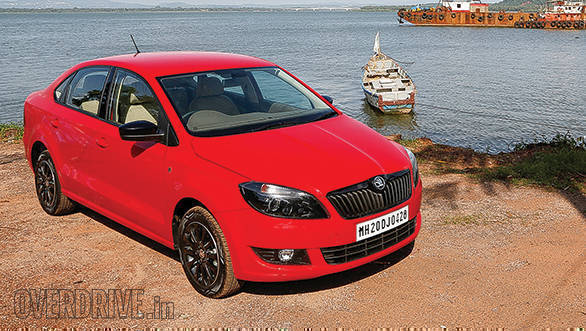
But most Indian customers are extremely smart and well informed, and they know what's what. However, even the majority of them, cannot identify vehicles that share a common platform or architecture. For example, how many know that the Maruti Suzuki Baleno, new Swift and Ignis all have a common platform. Or for that matter, the fact that the new Maruti Dzire is also based on it.
Yes, in recent time's platform sharing has become, the best way for most smart manufacturers to increase their product portfolio, while keeping development costs and time taken in check. Volkswagen which became the world's largest car manufacturer in 2016 has invested roughly 60 billion US dollars on its MQB platform! And as many as 60 different models can be built on it! Many within and outside Volkswagen say, the MQB platform is revolutionary and radical, because its architecture can be stretched and adapted to build vehicles ranging in size from a VW Polo to VW Passat! This Modular Transverse Matrix platform (MQB) is not just extremely flexible, but also designed to be part of a common production system across all Volkswagen factories globally. Yes, the MQB also allows all sorts of different vehicles to be made on the same production lines, with common manufacturing machinery. Vehicles of different length, width and wheelbase, and even with dissimiliar body styles, can all be produced with MQB in the same manufacturing facility.
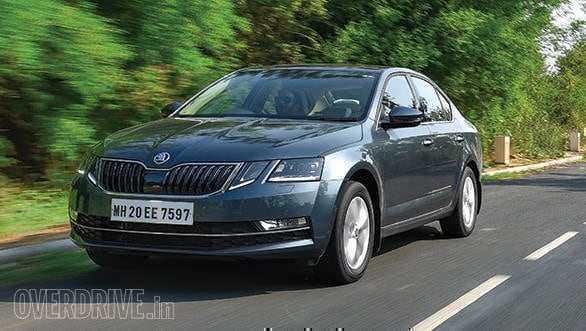
The benefits of such an adaptable platform are obvious, and given the highly favourable economies of scale, we should soon see most if not all VW plants around the world, becoming multi-brand factories where vehicles from Seat, Skoda, VW and even Audi, all are made alongside each other. This kind of flexible manufacturing structure with the use of many common parts will certainly result in significantly lower costs, and far production higher capacities with optimal utilization.
The MQB platform is really so advanced, that be it a 2, 4 or 5 door hatchback, sedan, estate, convertible or even roadster, all can be based on it. And even SUVs and MPVs, and obviously crossovers, which are getting increasingly popular. I am told, the MQB platform or system, is capable of accommodating 10 diverse body styles. And what's equally important is that, the MQB platform has a common engine mounting core system allowing both petrol and diesel engines of different capacities to be mounted in the same manner and with the same angle of inclination. Even hybrids and electric motors have been kept in mind while developing the MQB. Vehicles like the Skoda Kodiaq, Octavia, Volkswagen Tiguan and Audi Q7 that are now available in India are all based on the MQB platform. But sadly, German car maker Volkswagen's plans to shift all its production lines in India to the MQB platform has apparently been delayed, due to their lower than expected sales volumes in our market.
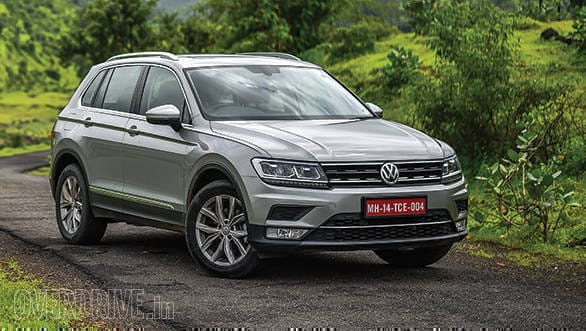 The MQB platform derived VW Tiguan, Skoda Kodiaq and Octavia, and Audi Q7 are widely divergent
The MQB platform derived VW Tiguan, Skoda Kodiaq and Octavia, and Audi Q7 are widely divergent
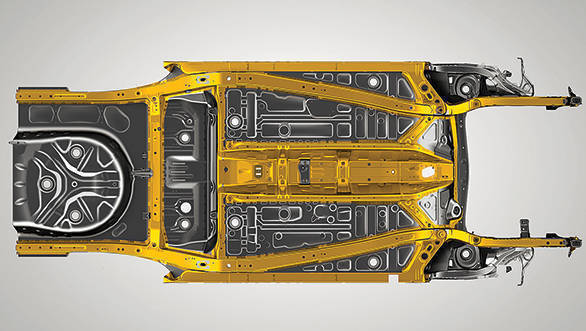 Cars made by Maruti on the HEARTECT platform are the Baleno, Ignis and new Dzire.
Cars made by Maruti on the HEARTECT platform are the Baleno, Ignis and new Dzire.
The launch of the new Maruti Suzuki Swift at the Auto Expo in February has once again put the spotlight on the advantages of sharing platforms. The new Swift is also based on Suzuki's 5th generation platform that Maruti calls the HEARTECT platform. Other cars made by Maruti on this platform are the Baleno, Ignis and new Dzire. This new generation platform is much lighter and said to improve rigidity and safety.
Interestingly, Maruti has been using the same 1.3 diesel and 1.2 petrol engines in almost all its vehicles for the longest time. These are tried and tested power plants that provide adequate performance and refinement and Maruti have done an appreciable job in extracting the best from them. The Baleno, Swift and Ignis are all offered with these engines, with the Baleno RS coming with a 1 litre direct injection turbo petrol engine making 101.3PS.
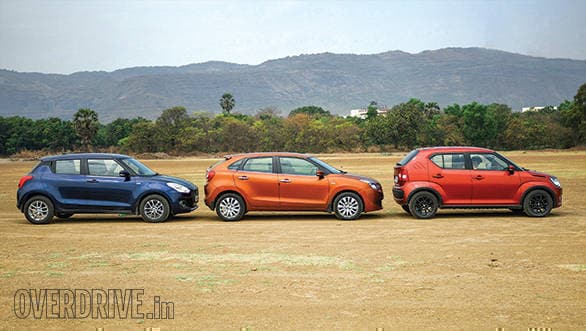
While the new Maruti Suzuki Swift, Baleno and Ignis all are based on the same platform, their makers have done well in making each one distinctive. In fact they are so diverse that most people would not imagine they have a common shared platform or architecture. Let's take a close look at the dimensions of all three. Because it's not just the proportions of length, width and height that are dissimiliar, but also the wheelbase. This has resulted in different exterior body sizes and styles, and also individually distinct interior space and capacities.
At 3,995 mm, the Maruti Suzuki Baleno is the longest and the Ignis (3,700mm) shortest of the three. The Baleno (1,745mm) is the widest and the Ignis (1,735mm) the narrowest. The height's also vary, with the Ignis (1,595mm) being the tallest and the Baleno (1,510mm) the shortest. The wheelbases of all three are also not the same. The Baleno at (2,520mm) has the longest wheelbase and the Ignis (2,435mm) shortest. The ground clearances vary significantly too - Maruti Suzuki Swift (163mm); Baleno (170mm) and Ignis (180mm). Interestingly, though Maruti have dropped Swift from the new Dzire's name, their wheelbases (2,450mm), width (1735mm) and ground clearance (163mm) are exactly the same, despite the fact that one is a hatch and the other a sedan. Being a sedan, the Dzire (378L) has the highest boot capacity, followed by the Baleno (339L); Swift (268L) and Ignis (260L).
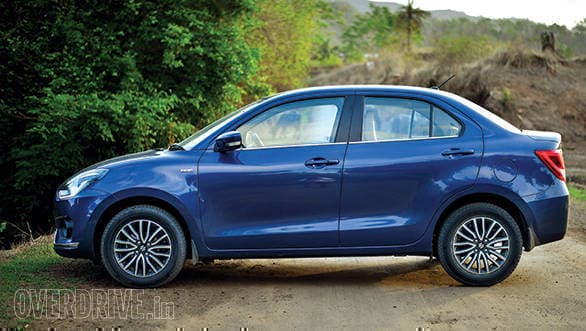 Being a sedan, the Dzire (378L) has the highest boot capacity, followed by the Baleno (339L); Swift (268L) and Ignis (260L).
Being a sedan, the Dzire (378L) has the highest boot capacity, followed by the Baleno (339L); Swift (268L) and Ignis (260L).
The exterior designs of the new Maruti Suzuki Swift, Baleno and Ignis are also fairly different and while the Swift and Baleno may have some similarities, the Ignis is completely unlike the other two. Actually its styling is nothing like that of any other hatch, and that's the reason I think the Maruti Suzuki Ignis has a unique and appealing character. It's also got several retro touches that are very welcome in this age of similiar looking cars. The Maruti Suzuki Ignis is also a genuine crossover. Yes, it was designed to be one from the very beginning and proudly carries its distinct identity unlike many other hatches that look awkward with their raised suspensions, increased ground clearance, heavy body cladding, grille guards, roof rails, extra lights, etc.
The question many will ask is which one of these three they should go for. That is exactly what manufacturers like Maruti Suzuki want. You can buy any of the three, as long as it's a Maruti. This is what platform sharing is all about. Manufacturers like Maruti Suzuki give you the choice to choose from their large and varied vehicle range. And as long as you pick one that they have produced, they are happy.
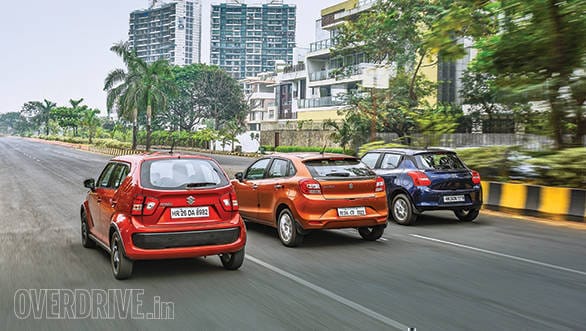
Given all this, it's quite clear that platform sharing or common architecture is here to stay and it's something we will see even more often. But is it only manufacturers that win, or do consumers also gain by this? The manufacture clearly profits the most, but in my opinion, the customer does not lose either. Simply because the consumer gets the power to 'pick and choose' and enjoy the liberty of having multiple options offered at fairly attractive prices.
Starts Rs 4.89 Lakhs
1197cc
Automatic
82.93
113
20.89 Kmpl
Starts Rs 5.73 Lakhs
1197cc
Automatic
89.73
113
23.76 Kmpl
Starts Rs 6.35 Lakhs
1197cc
Manual
90
113
22.94 Kmpl
Starts Rs 79.99 Lakhs
2984cc
Automatic
340
500
-NA-
Starts Rs 9.99 Lakhs
1461cc
Automatic
104
245
19.61 Kmpl
Starts Rs 8.49 Lakhs
1330cc
CVT
156
154
-NA-
Starts Rs 34.99 Lakhs
1984cc
Automatic
190
320
12.78 Kmpl
Starts Rs 7.49 Lakhs
999cc
Automatic
110
175
18.97 Kmpl
Starts Rs 31.99 Lakhs
1984cc
Automatic
190
320
12.65 Kmpl
Starts Rs 8.78 Lakhs
999cc
Automatic
105
175
17.69 Kmpl
